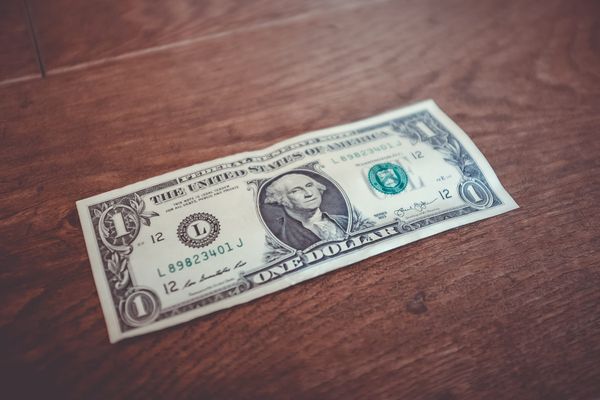
What Would A Negative Fed Rate Cut Look Like?
What Would A Negative Fed Rate Cut Look Like?
Things are far from rosy for America’s economy. There are hints of a looming and dire recession, with the Federal Reserve exploring unexampled measures to come out of the coronavirus pandemic alive.
In March, it pumped over $2 trillion into the economy by increasing SME (small and medium enterprises) lending and purchasing municipal bonds, among other emergency programs. It’s even resorted to buying corporate bond ETFs, an authority it has never used until today.
But while it’s clear that the Fed is leaving no stone unturned in terms of shoring up the economy, the debate on negative interest rates – a hot monetary policy tool that America’s central bank controls – is far from relenting. Many central banks elsewhere in the world have used them and seen non-definitive outcomes.
So, are negative interest rates really on the horizon for the 48 states? And how do they impact personal finances?
How Interest Rates Affect the Cut
Interest rates are among the key barometers used by the Federal Reserve to control monetary policy and keep the country’s economy in equilibrium. The Fed manipulates its rate to serve as a basis for other banks and lenders when setting their individual rates.
The Fed increases interest rates when the economy needs a buffer amid inflation since higher rates make consumer and business borrowing more profitable. When the country is approaching a recession, it decreases its rates as a way to lure borrowers and spenders, which then energizes the economy.
What Is a Negative Fed Rate Cut?
A negative Fed rate cut is a cut that drives the central bank’s interest rates under 0%. Hypothetically, negative rates benefit the economy by enticing consumers and banks to assume more risk via increased lending and borrowing.
When economies take a plunge, people are often cautious with their spending until concrete signs of improvement are palpable. This gives deflation a perfect opportunity to anchor on the economy – people hold on to their money, demand, and prices of goods and services drop, and people hold on tighter to their cash until prices dive even lower. It’s a dangerous trend that is often very difficult to stop.
Negative rates oppose deflation by increasing the cost of not spending money – that is, by offering rewards to spenders. In theory, negative interest rates would discourage people from keeping their cash in the bank; rather than their savings earning interest, the bank could impose holding charges. At the same time, negative interest rates would make borrowing money seem like an advantage since it drives loan rates into the ground.
The first central bank to take on a negative interest rate policy was the European Central Bank during the height of the eurozone crisis. The ECB dragged its deposit rate to -0.1% in 2014 as it tried to suppress deflation and spare the economic bloc from a drawn-out lassitude. The ECB’s current deposit rate is its lowest ever -0.5%.
Beyond Europe, financial turmoil has been threatening Japan over the last twenty years, with its central bank being first to adopt a zero-interest policy in 1999. The Bank of Japan’s key rate has been in the negative since 2016, and neither the BoJ nor the ECB has managed to cross over to the positive.
Negative Fed Rate Cuts in the U.S.
For most of the COVID 19 outbreak, the U.S. has been fizzing about negative fed rate cuts.
The President himself has openly talked about negative interest rates as a lifesaver for the economy. Future market investors scrambled to bet on the Fed using them, which meant more media mileage for calls to implement the controversial monetary policy tool. However, the Federal Reserve has repeatedly said that negative interest rates are hardly in order.
Today, the Fed continues to stand its ground against using negative rates to tighten the economy’s bolts. While it seems to be the solution everyone’s been rooting for, the Fed insists negative rate cuts are not and will not be happening soon.
According to the Federal Open Market Committee, negative rates are not the silver bullet everyone seems to hope it would be, and that evidence of the tool’s benefits is so far inconclusive. While the Fed does not completely rule out the move in the future, it insists that it is not a quick relief that is applied just because the bond market is not recovering ideally.
Instead, these drastic cuts are acutely complicated, requiring specifically dire conditions and necessary complementary regulations before the central bank can make them work. Negative rates are not the silver bullet everyone seems to hope it would be, and that evidence of the tool’s benefits is so far inconclusive.
While the Fed is not completely ruling out the move in the future, it insists that negative rates are an acutely complicated option that calls for several specifically dire conditions (to be defined by regulatory agencies), instead of a quick relief that must be applied just because the bond market is not recovering ideally.
Negative Fed Rate Cuts and Their Impact on Personal Finances
Regardless of negative interest rates being a distant possibility at this point, it’s important to understand how monetary policy can impact personal finances, particularly in the following ways:
Credit Cards
Historically speaking, negative interest rates are sure to pull down credit card interest rates. With the current average credit card rate at 16.61% (based on first-quarter Fed data), a negative rate cut could reduce it even further. That said, it is unwise for people to think they would get paid with each swipe of their card.
Loans
While negative rate cuts led to some noteworthy improvements for Denmark and Finland, experts say very steep drops in mortgage rates can eventually cause housing prices to soar, with borrowing becoming less expensive and, therefore, greater in demand.
Savings Accounts
Savings account yields would likely be demolished when interest rates drop below zero. Take note that among the key roles of negative interest rates is to make people spend money instead of stashing it in the bank. In such a case, high-yield savings accounts can only sink to extinction.
People who like to save big could also suffer greatly from negative rate cuts. For example, a bank that implements negative interest rates on clients with more than $1.1 million balances could charge them as much as .6% in holding fees.
The Bottomline
Negative Fed rate cuts are Federal fund interest rates set below 0% in response to severe economic turmoil. While they can be implemented under no particular circumstances, the Fed argues that the absence of certain preconditions and complementary regulations make it impossible for them to pull any strings successfully.
While the central bank has maintained that negative rates are improbable in the near future, it is prudent to get an overview of how they may impact personal finances before they actually do.


